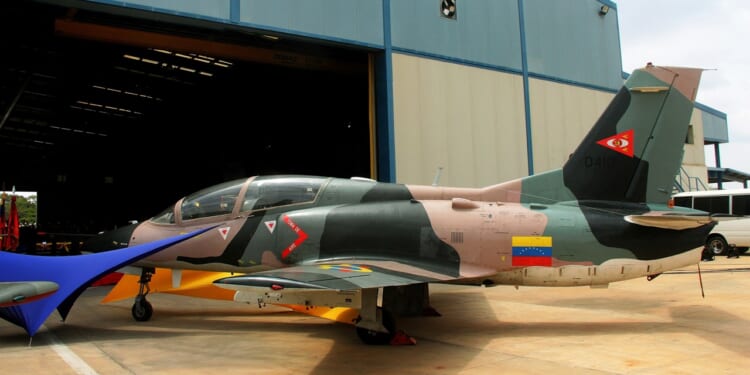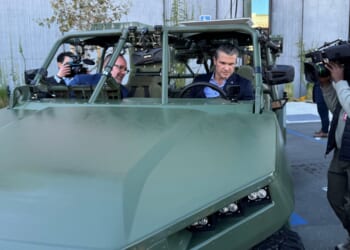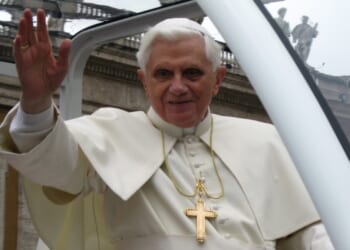Without a coherent modernization program, the Venezuelan air force is likely to continue to decline—or, in the event of conflict with the United States, quickly fall apart.
The Trump administration’s repeated strikes against Venezuelan boats—claimed to be drug smugglers—has raised questions about a future military confrontation with the troubled South American state.
The Venezuelan military is no longer amongst the more impressive in Latin America, a trend that the country’s air force underscores. Though it is modestly capable on paper, the “Bolivarian Military Aviation of Venezuela” is plagued by chronic maintenance issues, a lack of parts due to sanctions, and declining readiness rates. Dependent on a mixed fleet of Cold War leftovers and a handful of modern Russian fighters, Venezuela is capable only of holding a deterrent posture—not sustaining any form of combat.
Venezuela’s Fighter Fleet Is a Mess
The jewel of the Venezuelan inventory are about two dozen Su-30MK2 Flankers, imported from Russia in the mid-2000s. Sleek, twin-engined multirole fighters, the Su-30 gives Venezuela some range and precision strike and beyond-visual-range (BVR) potential.
Amongst South American nations, the Su-30 sits near the top of the food chain. Only Brazil’s Gripen JAS 39s and Chile’s F-16 Fighting Falcons offer parity. But despite being capable and imposing, the Su-30s are highly expensive to maintain. And with US sanctions restricting access to spares and avionics, Venezuela has become dependent on Russia and Iran just to provide the assistance necessary to keep its fleet airworthy.
Below the Su-30s, Venezuela relies on an increasingly eclectic mix of light attack jets and trainers. Some F-16A/Bs, bought from the US in the 1980s, remain in inventory, but most are effectively grounded for lack of parts and weapons support. (Not all of them are, however; two Venezuelan F-16s notably “buzzed” a US Navy destroyer last month.) Venezuela’s older French Mirage 50s have been retired entirely. To fill the gap in training and counter-insurgency roles, Caracas employs the K-8W Karakorum jet from China, as well as a handful of turboprop trainers that can deliver bombs and rockets against insurgents or smugglers—but are hardly adequate for high-intensity conflict with a sophisticated adversary like the United States.
Venezuela Has Helicopters and Transport Planes, Too
The rotary-wing fleet features Russian Mi-17 Hip transports and Mi-35 Hind gunships—capable of providing troop lift and fire support in remote jungles and border regions. The helicopters have also served as the workhorses of Venezuela’s internal security operation, moving special-forces units against smugglers or guerrilla groups along the Colombian border. Still, the helicopter fleet is aging, and availability is declining as parts supplies dry up.
For transport and logistics, Venezuela has a handful of older C-130 Hercules cargo planes, courtesy of the United States in the pre-Hugo Chavez era, and some small Soviet-era cargo aircraft. The logistical fleet is sufficient to facilitate internal troop movements, but offers little strategic reach.
All told, the Venezuelan air force is mostly symbolic. It is certainly capable of defending the capital and deterring smaller neighbors. But in any form of sustained high-tempo operation, the air force would quickly prove inadequate.
There is little evidence of this pattern changing soon. Venezuela is increasingly dependent on external support, notably from Russia. But the Kremlin, which provides parts and technical assistance to Caracas, is stretched thin thanks to a four year war of attrition against Ukraine, leaving far fewer resources to invest in Venezuela’s defense. And without consistent training pipelines, the entire force structure is at risk of atrophy. Without a coherent modernization program, the Venezuelan air force is likely to continue to decline—or, in the event of conflict with the United States, quickly fall apart.
About the Author: Harrison Kass
Harrison Kass is a senior defense and national security writer at The National Interest. Kass is an attorney and former political candidate who joined the US Air Force as a pilot trainee before being medically discharged. He focuses on military strategy, aerospace, and global security affairs. He holds a JD from the University of Oregon and a master’s in Global Journalism and International Relations from NYU.
Image: Shutterstock / Humberto Matheus.
















